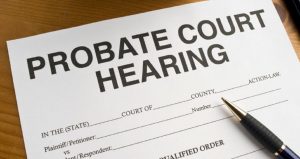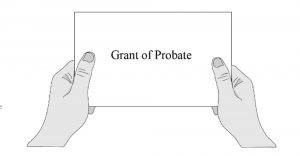Table of Contents
You can get an inheritance within months if the estate and process are simple, but a complex case can last for years.
Let’s explore the duration of the inheritance process and the antecedents.
Key Takeaways
- The duration of receiving your share as a beneficiary depends on the complexity of the estate and the status of the estate plan.
- Trusts and gifts offer quickest way to get an inheritance as Wills and cases of intestacy must undergo the probate process.
- Most importantly, estate battles could also delay estate distribution as parties litigate for justice.
What is The Probate Process?

Probate cases
Probate is the legal procedure for resolving the estate of the deceased. The Probate court confirms the legality of the Will and gives the designated executor authority to operate on behalf of the estate.
Essential tasks like signing land title documents to buy, sell, mortgage, or transfer real property and directing ICBC to transfer vehicle ownership to another person may only be possible for the executor to complete with a Grant of Probate.
Notably, strict guidelines from several institutions are in place to guarantee a legal transfer of the deceased’s assets. Banks, the Land Title Office, and the country’s Revenue Agency are third parties that acknowledge and verify the existence of a court-certified copy of the estate grant. This copy proves that the executor has the legal right to act on behalf of the estate.
How to Get an Inheritance When There Is No Will

Dying Intestate
Without a will, the probate court may select a close friend, professional, surviving spouse, other surviving family members as the “administrator” of the estate. The probate court will issue a Grant of Administration or estate grant if the case is successful.
The Grant of Probate and the Grant of Administration have the the same legal standing, and the applicant has the same authority to act on behalf of the deceased’s estate.
When someone passes away “intestate,” meaning without a will, their heirs divide the estate under the priorities outlined in the Wills, Estates and Succession Act. Usually, the spouse of the deceased would first in line to inherit.
The Step-by-Step Timeline for Receiving Inheritance from a Will
-
Identification of All Assets and Liabilities
Gathering information about the deceased’s assets, such as bank accounts, real estate, and cars, as well as any estate liabilities, like mortgages, credit cards, loans, or other outstanding bills, is the first step for the executor or administrator of the estate.
-
Application for an Estate Grant

Grant of Probate
The executor must request for a Grant of Probate. However, there must be a submission of an Affidavit of Assets and Liabilities for a Domiciled Estate Grant to the probate court. All the estate’s assets and debts appear in this document, along with their fair market worth as of the death date. The Affidavit’s amounts apply when computing the probate tax.
However, an executor or potential administrator should consult a lawyer before submitting an estate grant application to ascertain whether a Grant of Probate or Administration is necessary before the estate division.
Beneficiaries can receive assets, such as Tax-Free Savings funds, retirement funds, and life insurance policies without the requirement for probate.
-
Notifying Beneficiaries and Creditors

Probate court
Before the distribution of an estate, one must notify the beneficiaries, creditors, and next of kin.
Under probate court regulations, an applicant must send their formal notice detailing their intention to apply for an estate grant, along with a copy of the Will, to all beneficiaries in case it applies, to the deceased’s intestate successors if there is no Will, and to creditors if the deceased passed away without a Will.
This process can entail tracking and informing the deceased’s potential spouse, children, or distant relatives. Filing an estate grant application should start about 21 days after the giving of the notices.
It might also be mandatory to inform creditors and other claimants via the local press or Gazette to present their claims against the deceased’s estate to the executor or administrator within a certain time.
The probate court must review the applications in the order of their filing. Following its assessment of the application, the court will notify the attorney or other designated contact to inquire about any outstanding matters, request payment of any applicable probate fees, and notify the listed contact about the issuance of the estate grant.
Time spent in court can range from four to eight weeks to several months. Only after the settlement of all disputes and the payment of all necessary probate fees can the estate grant be granted. Obtaining an estate grant requires first paying the costs associated with probate.
After the issuance of the estate grant, the executor or administrator can begin managing the estate assets and distributing certified copies of the estate grant to different institutions.
-
Fulfilling Obligations and Debts
The executor or administrator should pay all funeral expenses, court charges, probate fees, legal fees, and any unpaid debts or valid claims against the estate before you get an inheritance. If the payment of these debts or claims against the estate does not happen after the distribution of the estate, the executor or administrator may be held personally liable.
-
Completing the 210-Day Hold Period

Inheritance rights
Unless all beneficiaries agree or a court order is in place, the executor can only distribute the estate 210 days after making the probate grant. The waiting period, which follows the Wills, Estates, and Succession Act, is intended to give time for filing any maintenance claims from the estate, sometimes referred to as wills variation claims.
The initiation of a claim for a change in a will must happen within 180 days after granting the estate grant, and the executor should receive it within 30 days.
The executor faces personal blame if a maintenance claim arises after they’ve distribute an estate before the 210-day waiting period without permission or a court order.
After settling debts and liabilities using the proceeds from the sale and liquidation of the estate’s assets, the executor or administrator can start allocating the estate.
The executor or administrator must also file the necessary tax returns, including an estate tax return and a final income tax return, and pay any unpaid taxes. Following the disposal of the estate, the executor or administrator may be held personally liable for any unpaid taxes.
Once the revenue agency delivers the tax clearance certificate, all outstanding estate accounts may be closed, and the final distribution to the residual beneficiaries may occur. The residual beneficiaries could take up to a year to get their final payout.







